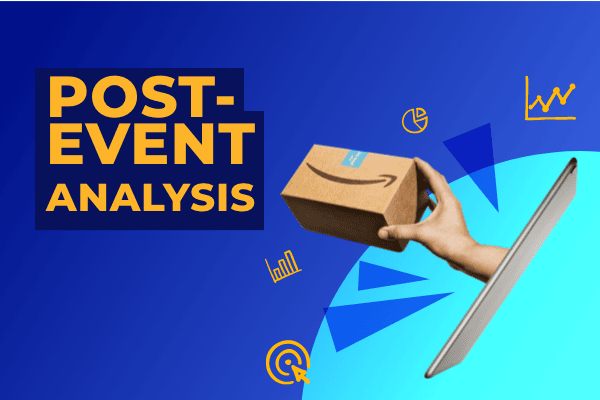Summary
This second part of our retail media standardization series addresses the urgent need for greater data transparency. Specifically, how enhanced data access can empower advertisers, drive efficient spending, and ultimately lead to reinvestment and growth.
Read all of the posts in this retail media standardization series.
Calls for retail media standardization are getting louder, but we may not see progress for some time as complexities within categories and networks make standardization difficult. Advertisers, however, can’t wait for retailers to make a move. They want to compare performance between networks and scale growth now. Partners like Skai can help, if retailers can start providing us with more data – specifically, more interpretable data – so we can build tools that offer greater transparency, connectivity, and control.
Transparency is all about providing advertisers with relevant data so they can generate deeper context. Let’s explore how transparency will benefit advertisers and help the networks achieve the ultimate goal: growing spend.
Performance = reinvestment
There is a misconception amongst the retailers we regularly speak to that offering up more data or optimization opportunities will result in advertisers pulling back on spending. The opposite is actually true! With more data, advertisers can spend more efficiently – but that doesn’t mean they pull back the money they save. Instead, they reinvest those dollars.

According to McKinsey, an estimated 84% of new retail media spend will come from budgets currently not accessible to retailers today. And of that, 38% of net-new spending is from advertisers reinvesting after performance gains.
Over the years, we’ve seen plenty of examples of this.
How more data from Amazon drove increased advertiser investment
For many years, Amazon had been hesitant in sharing too much data with advertisers, concerned that spending would drop if advertisers were empowered to make their budgets more efficient. But the opposite happened.
In 2022, Amazon opened up its Amazon Marketing Stream API, which provides hourly campaign metrics and information in near real time. On its own, this is not especially actionable. But this is where third parties like Skai prove their value in improving transparency (and actionability).
With new hourly data at our fingertips we wanted to start leveraging it as quickly as possible for advertisers. Our technology takes the historical hourly attribution data in Stream and identifies trends amongst CPC, click, conversion and conversion rate metrics. With the specific use case in mind — “How can we maximize budgets during the best converting times of day?” — our data science team created an AI-powered service to output individual campaign recommendations for when to increase and decrease bids.
Future Beauty Labs, one of the world’s fastest growing beauty-tech incubators, immediately took advantage of this. Operating in the highly competitive cosmetics industry, the brand’s agency was challenged to grow market share while simultaneously maximizing profitability. The agency had been using manual dayparting strategies in the Skai platform for some time to help better distribute budgets throughout the day, seeing an increase in ROI of 14.5% as a result.
When you are already running highly optimized campaigns like this, it’s even more important to get your hands on new data as an optimization lever. Once we integrated Amazon Marketing Stream data into the platform, the agency began using Intraday Reporting to quickly surface hourly performance insights and see which keywords were driving the most conversions, adjust their keyword bid strategy accordingly, and automate optimization for efficient spending with Advanced Automated Actions.
In the end, the agency was able to successfully reduce branded ad spend while optimizing ad spend for the incremental, non-brand strategies. They exceeded their ROAS goals and significantly improved the performance of FBL’s non-brand campaigns, keeping CPC flat despite increasing ad spend by 40%.
So, what data should retailers make available?
The Incorporated Society of British Advertisers (ISBA) and Omnicom Media Group (OMG) recently released a retail media standardization framework that includes good guidance on the data that retailers make available. Their recommendations include:
The expansion of basic and advanced media metrics to be consistent with how similar metrics are reported in other channels as outlined in the Media Rating Council’s Outcomes and Data Quality Standards.
The expansion of and increased transparency around retail data points, allowing advertisers to understand the incrementality and profitability of their investments.
Extractable, consistent reporting – ideally delivered via API – with a consistent view across reports and transparency around the available data points and how they’re defined.
We have our own perspective on the specific datasets that are foundational to powering commerce marketing. The same advertising metrics called out by ISBA and OMG are the essential key performance indicators that steer performance and optimize budget. To that, we can add two other types of valuable data:
- First-party data from the brands themselves. These insights into consumer interactions and preferences are crucial to engaging customers in a personalized way.
- Retail intelligence from other data partners, which covers market trends, consumer behaviors, and competitor insights to help brands position themselves strategically and make informed decisions.
How Skai’s open data platform drives results
When third-party partners like Skai combine advertising metrics with first-party data and retail intelligence, brands benefit from greater transparency and stronger performance. The retailers benefit from additional investments.
Here’s just one example. Skai’s integration with Profitero’s Shelf Intelligent Media uncovers retail intelligence like competitor stockouts – which includes not only which products are out of stock, but also when that availability changes and which of your own products are the best match for consumer intent.
Imagine knowing that 30% of a competitor’s products are out of stock and being able to quickly and automatically increase your bids on keywords to capture new buyers – at scale, and all within one platform! One nail care brand did just that and saw a 128% rate lift in new-to-brand buyers.
That’s just one story; we have many more like it. Our open platform allows us to combine data from retailers, data partners, and brands – resulting in custom optimization opportunities that drive incredible results. Data transparency is the key to making this happen.
All retailers can provide more accessible data today, even if it’s just within their own walls, so we can extract it and combine it with data from other sources to create a virtuous cycle that drives growth. Data transparency is essential to this; so is data connectivity. Read more about data connectivity here.







